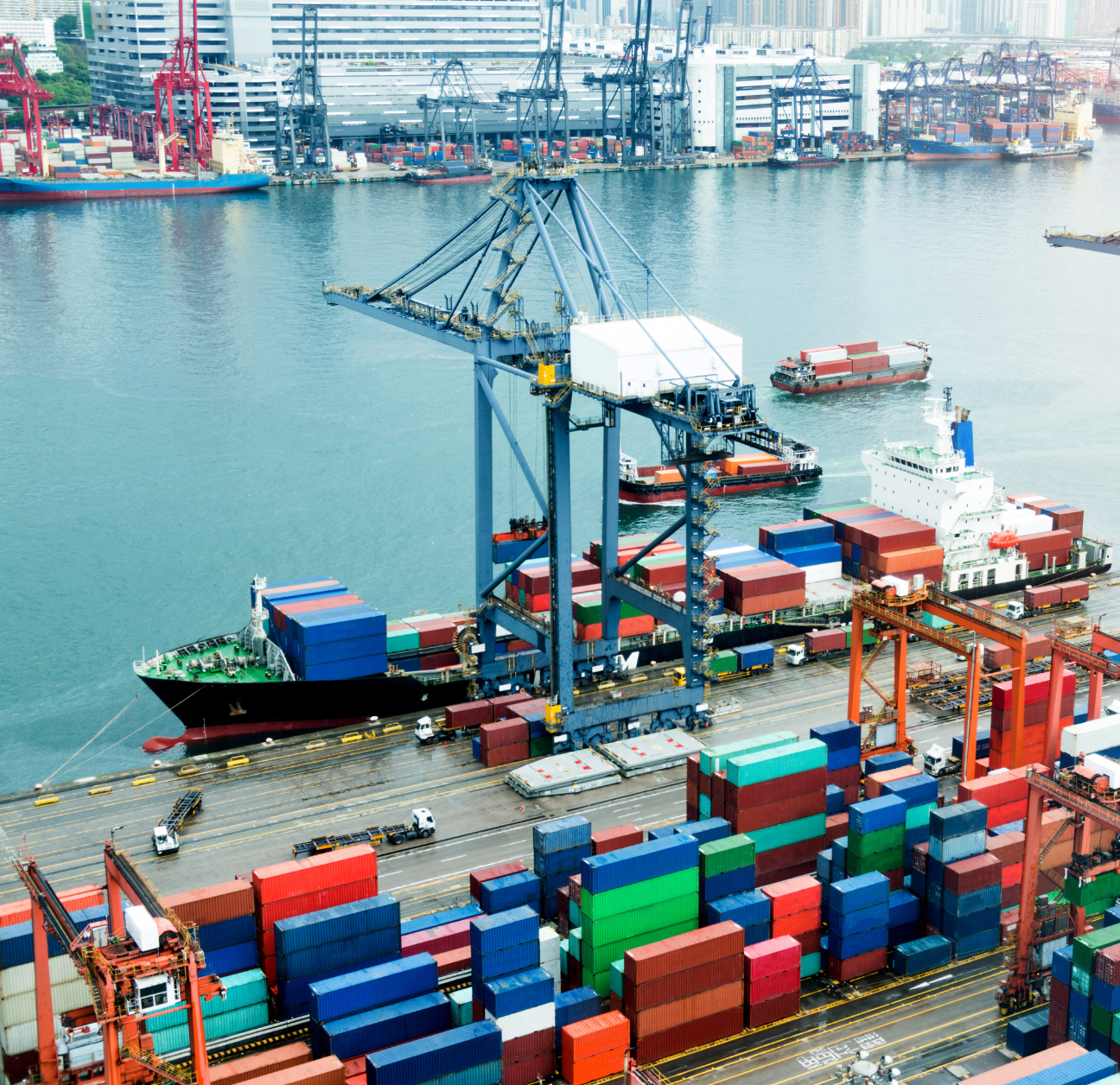We've completed logistics and supply chain automation projects in weeks that our customers were told would take months. We finish integrations fast, freeing up resources to focus on innovation and service without bogging down internal IT teams.
Supply Chain Automation
Supply chain automation is no longer a futuristic concept. It’s here, transforming operations, cutting costs, and reducing inefficiencies across global supply chains. As businesses seek ways to streamline supply chain processes, automation technology is essential for eliminating bottlenecks, improving visibility, and enhancing decision-making.
But automation isn’t just about replacing manual tasks with machines. It uses data integration platforms, robotic process automation (RPA), and AI-driven analytics to make informed, strategic moves that drive long-term efficiency.
This guide explores how supply chain automation works, the benefits it brings, and the key challenges companies must overcome. More importantly, it sheds light on why successful automation is more than just technology—it’s smart integration and execution.
What is supply chain automation?
Supply chain automation refers to using technology to perform routine supply chain tasks with minimal human intervention. It eliminates inefficiencies, reduces operational costs, and enhances supply chain visibility, making it easier for businesses to track shipments, manage inventory, and optimize logistics in real-time.
Key components of supply chain automation include:
- Order management automation: Reduces order processing and fulfillment errors by automatically updating inventory and tracking shipments.
- Logistics and transportation automation: Provides real-time shipment tracking and optimizes routing for better efficiency.
- Warehouse and inventory automation: Uses AI-driven analytics and IoT-enabled sensors to manage stock levels, reduce waste, and enhance inventory management.
- Data integration and compliance automation: Ensures seamless data exchange across supply chain systems while meeting regulatory requirements.
Companies historically relied on traditional Electronic Data Interchange (EDI) to manage their supply chains. However, modern integration platforms like supply chain automation software offer real-time connectivity across multiple systems, including APIs, EDI, and custom integrations. This shift enables businesses to handle supply chain tasks more accurately and quickly.
Top benefits of supply chain automation
As supply chains become more complex, businesses need solutions that can handle vast amounts of data, streamline workflows, and minimize human errors. Automation provides a clear path to achieving these goals by enhancing efficiency, reducing operational costs, and improving decision-making.
Below are some of the most impactful benefits of implementing supply chain automation.
1. Reduces manual work and human error
Manual supply chain processes often rely on spreadsheets, emails, and phone calls for coordination. These methods introduce errors, delays, and inefficiencies. Automation eliminates these problems by enabling real-time data exchange between systems.
2. Enhances real-time transparency and tracking
Automated systems allow businesses to instantly track shipments, inventory levels, and supplier performance. With supply chain automation tools, companies can make faster, more informed decisions to prevent disruptions. Enhanced supply chain transparency ensures companies can respond quickly to unexpected changes.
3. Optimizes cost efficiency
Labor costs, freight charges, and storage expenses add up. Automation optimizes these costs by improving routing efficiency, reducing excess inventory, and cutting the time spent on manual data entry. This reduces operational costs while improving overall productivity.
4. Improves compliance and risk management
Supply chains must adhere to international trade regulations, and failure to comply can result in significant penalties. Automation ensures businesses meet compliance requirements by integrating rule-based workflows that verify data accuracy before submission.
5. Scalability and future-proofing
As businesses expand globally, manual processes can’t keep up with increased demand. Automation allows companies to scale without proportionally growing labor costs, making it a crucial investment for long-term growth.
The biggest challenges in supply chain operations today
While automation offers clear benefits, supply chain leaders still face significant hurdles in modernizing their operations. From fragmented systems to legacy technology, these challenges hinder efficiency and scalability. Understanding these obstacles is key to overcoming them and unlocking the full potential of supply chain automation.
1. Disparate systems and data silos
Many companies struggle with disconnected platforms that create inefficiencies. A lack of seamless data exchange makes gaining a holistic view of operations difficult. Integration platforms like supply chain automation help bridge these gaps by ensuring consistent data flow.
2. Legacy technology and resistance to change
Businesses relying on EDI-based workflows often hesitate to transition to modern automation solutions. The gradual adoption of API-based integrations allows companies to modernize without disrupting operations.
3. High implementation costs and complexity
Many companies believe automation is expensive and complex to implement. However, pre-built integrations and cloud-based platforms significantly reduce costs and deployment time, making automation more accessible.
4. Compliance and data security risks
Ensuring compliance with trade regulations and data security standards is critical. Platforms like supply chain automation solutions prioritize secure data exchange, reducing risks associated with automation.
Best practices for implementing supply chain automation
Successfully implementing supply chain automation requires more than just adopting new technology—it demands a strategic approach that aligns automation with business objectives.
Companies focusing on structured implementation, data accuracy, and seamless integration will maximize efficiency and long-term scalability. Below are key best practices to ensure automation initiatives deliver real results.
1. Identify key areas for automation
Prioritize high-impact processes such as order fulfillment, shipment tracking, and payment reconciliation. Automating these areas first delivers quick wins and builds momentum.
2. Invest in scalable, future-proof solutions
Select platforms that integrate seamlessly with existing supply chain systems to avoid technological obsolescence. Supply chain automation benefits include flexibility and adaptability for long-term growth.
3. Ensure data accuracy and standardization
Automation is only as good as the data it processes. Standardized data ensures smooth system communication and prevents errors in automation workflows. Businesses must also ensure their automated supply chain functions efficiently by maintaining high data quality.
4. Prioritize integration with existing systems
Rather than creating automation silos, businesses should ensure seamless data exchange across all platforms, from ERPs to transportation management systems (TMS).
5. Measure success with Key Performance Indicators (KPIs)
Track order accuracy, fulfillment speed, cost reductions, and customer satisfaction to gauge the effectiveness of automation initiatives.
Choosing the right supply chain automation solution
When selecting a supply chain data automation platform, businesses should look for:
- Pre-built integrations with TMS, WMS, ERP, and visibility platforms
- Scalability to support future growth
- Pre-configured workflows to reduce deployment complexity
- Robust security and compliance measures to safeguard supply chain data
Unlike generic automation platforms, Chain.io is explicitly built for logistics business processes. Connecting disparate systems and streamlining supply chain processes reduces implementation headaches while maximizing operational efficiency.
Why automation is essential for supply chain success
Supply chain automation isn’t just about efficiency—it’s necessary for businesses aiming to remain competitive in a fast-evolving industry. Companies that automate their operations gain better visibility, improved cost control, and stronger compliance management.
The key to successful automation lies in choosing the right platform that seamlessly integrates with existing systems, enhances data accuracy, and scales alongside business growth.
Ready to optimize your supply chain? Book a demo today to see how automation can transform your logistics operations.
Supply chain automation FAQs
As supply chain automation continues to evolve, businesses often have pressing questions about how it fits into their broader supply chain management strategies. Below, we address some of the most common inquiries.
How does supply chain automation enhance supply chain management?
Supply chain automation streamlines business processes by reducing manual intervention, improving efficiency, and enhancing real-time decision-making. By automating routine supply chain functions, companies can reduce errors, optimize resource allocation, and improve supply chain visibility across the entire supply chain.
What role does artificial intelligence play in supply chain automation?
Artificial intelligence (AI) enhances automation by analyzing vast amounts of data to predict demand, optimize inventory management, and improve logistics efficiency. AI-driven insights allow companies to handle supply chain tasks with greater accuracy and responsiveness.
How can businesses ensure their automation strategies remain effective over time?
Implementing a supply chain automation guide that prioritizes scalability and integration is crucial. To maintain efficiency, businesses should continuously assess their automation technology, update workflows, and ensure compliance with industry regulations.
How does automation impact raw materials sourcing and inventory management?
Automation improves the tracking and allocation of raw materials, reducing waste and ensuring inventory levels are optimized based on real-time demand. Automated systems help businesses avoid overstocking or shortages, ultimately improving operational efficiency and cost savings.
What are the key steps in choosing the right automation solution?
Businesses should evaluate automation platforms based on scalability, ease of integration, compliance capabilities, and the ability to handle diverse business processes. Selecting a solution that supports a wide range of supply chain functions ensures long-term success.







